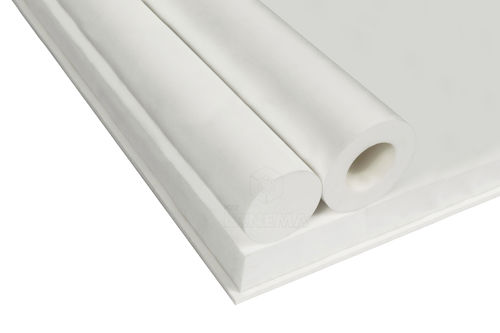Reinforced with a synthetic mica, this material exhibits, in addition to its excellent chemical resistance and hydrolysis, excellent mechanical and tribological properties. Fluorosint® 500 has nine times greater resistance to deformation under load than PTFE. Its coefficient of linear thermal expansion approximates the expansion rate of aluminum and is 1/4 of the virgin PTFE. Fluorosint® 500 reinforced PTFE offers an ideal combination of stability and wear resistance for sealing applications where excellent dimensional stability is required.
MAIN CHARACTERISTICS
- Very high maximum allowable service temperature in air [260 °C continuously]
- Moderate mechanical strength and stiffness
- Good dimensional stability
- Excellent chemical and hydrolysis resistance
- Low deformation under load [particularly Fluorosint MT-01]
- Low coefficient of friction and good wear resistance
- Outstanding UV- and weather resistance
- Physiologically inert [Fluorosint 207 and HPV have a food contact compliant composition]
- Inherent low flammability
APPLICATIONS
- High performance bearings, bushings and seals where higher loads and minimal wear are required.

